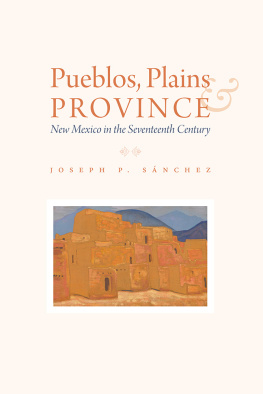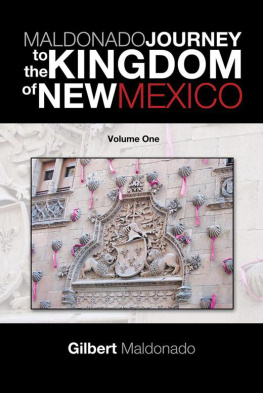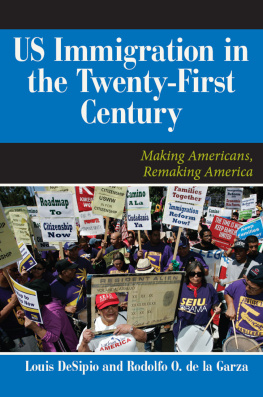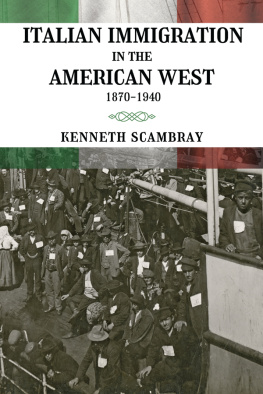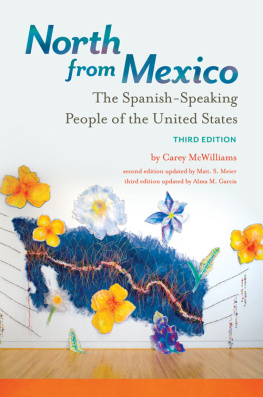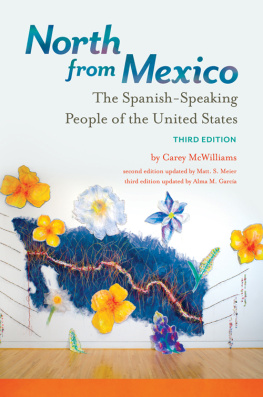Cover Credits:
front top, Armas de la Provncia de la Luisiana, Archivo General de Indias, Seville, Spain; front bottom, Baxa Luisiana by Jaun Pedro Walker, The Historic New Orleans Collection 1977.97; rear, Mapa de las locaciones Del Distrito de Manchack by Vicente Sebastin Pintado, Library of Congress.
2014 by University of Louisiana at Lafayette Press
All rights reserved
ISBN 13 (paper): 978-1-935754-30-5
University of Louisiana at Lafayette Press
P.O. Box 40831
Lafayette, LA 70504-0831
http://ulpress.org
Printed on acid-free paper.
Library of Congress Cataloging-in-Publication Data
Din, Gilbert C.
Populating the barrera : Spanish immigration efforts in colonial Louisiana / Gilbert C. Din.
pages cm
Includes bibliographical references.
ISBN 978-1-935754-30-5 (paper : acid-free paper)
1. LouisianaPolitics and governmentTo 1803. 2. LouisianaColonizationHistory18th century. 3. LouisianaEmigration and immigrationHistory18th century. 4. Land settlementPolitical aspectsLouisianaHistory18th century. 5. GovernorsLouisianaHistory18th century. 6. SpaniardsLouisianaHistory18th century. 7. SpainColoniesAmericaAdministrationHistory18th century. 8. Frontier and pioneer lifeLouisiana. I. Title.
F373.D57 2013
976.302dc23
2013038864
F OREWORD
Many decades ago, I was in Madrid as a graduate student exploring the Spanish archives for a research topic for my dissertation in Historia de Amrica at the Universidad Complutense de Madrid. When I now look back on those days, there were countless subjects that awaited fledgling historians like me. Initially, a theme on Lower California attracted my attention. At the time King Carlos III expelled the Jesuit missionary order from the Spanish colonies in 1767, the Jesuits left behind numerous records that detailed their work. The documents for Lower California included ledgers, diaries, books, maps, and a wide assortment of manuscripts they had accumulated through the eighteenth century. Royal officials shipped them to Spain, where the records were deposited in Madrids Archivo Histrico Nacional (AHN). I spent several days poring through the documentation before deciding against pursuing a religious topic. My secular mind warned me that missionary activity among the indigenous inhabitants of Lower California was not my cup of tea. Furthermore, hailing from southern California added to that sentiment because I craved something more exotic.
Fortunately, the AHN possessed a surfeit of documents suitable for investigation. After considering several more topics, an archivist directed me to a collection of very legible manuscripts in the Estado (State) papers called Relaciones diplomticas entre Espaa y los Estados Unidos. These records deal with problems between Spain and the United States in the years after American independence in the late eighteenth century. Several of the legajos , or bundles of documents, in the Seccin de Estado and numbering from 3882 to 3902 contain records that discuss Spains effort to augment Louisianas inhabitants through the acquisition of Acadians, Canary Islanders, French Canadians, Irishmen, Germans, and even American Protestants. For that purpose, Spanish authorities received proposals to bring in Louisiana Creoles, Americans, Irishmen, and assorted other foreigners. In addition, within these AHN manuscripts are those that detail James Wilkinsons notorious scheme to form an alliance with Spain through the separation of Kentucky from the United States. Another intriguing aspect was Spains attempt to convert to Catholicism the Protestant British settlers and American immigrants in West Florida. The proselytizing labor fell to English-speaking Irish missionaries who were recruited in Spain; they were there because the Anglican British government had shut down the Catholic seminaries that trained priests in Ireland. Inasmuch as the immigration documents are tied to diplomatic themes, they incorporate letters generated at Court wherever that happened to beMadrid, Aranjuez, San Lorenzo de El Escorrial, or San Ildefonso de La Granja. Players in the drama in Spain include the principal Spanish ministers of state and other Court officials. In the colonies they are the governors, captains general, sometimes the intendants, and to a lesser degree the Spanish diplomatic officials in New York and Philadelphia assigned to handle relations with the United States government.
The AHN documents, however, do not include the multitude of documents that originated in Louisiana, written either by the governor or by commanders at the new settlements and directed to the governor. Spanish officials evacuated these provincial records upon their withdrawal from Louisiana and West Florida in the early nineteenth century. They were housed in Havana for several score years. Eventually in the late nineteenth century, Spain transferred them to the Archivo General de Indias (AGI) in Seville, where they were labeled Papeles Procedentes de la Isla de Cuba. To consult these documents, I took the overnight train from Madrid down to Seville several times and spent approximately four months rummaging through a good batch of legajos, taking notes and copying documents. In addition, I used whatever published materials on Louisiana the libraries of the archives and Madrids Biblioteca Nacional (National Library) possessed. The Manuscripts Section of the Biblioteca Nacional also contains several small collections of documents that deal with Spanish Louisiana and Florida. Many of these documents are one of a kind and without copies at the AHN or AGI. The other repositories in Madrid, however, failed to yield records useful to my research.
After arranging the documents and notes in the proper order, I began composing my dissertation that became Colonizacin en la Luisiana espaola del siglo XVIII. It focuses on Spanish policies and efforts to enlarge Louisianas sparse population and create a barrera (barrier) along the Mississippi River against first British and then American encroachment on their North American possessions. The creation of settlements in Louisiana plays a far lesser degree of importance in the dissertation. This is not to say that documents on the establishment of settlements do not exist, rather they were at the AGI in very scattered legajos that made them time-consuming to consult. In addition, my research at the AGI preceded organization of the Papeles de Cuba according to chronology and authors to facilitate microfilming them in a coherent manner. In other words, the Papeles were then in a terrible disarray and required protracted time to pore through the bulky legajos that can each hold as many as two thousand documents. Besides, use of all these records would have taken untold years and produced a multi-volumed dissertation. As it was, my doctoral oeuvre still consumed four hundred pages of text. Fortunately, when I presented it at the Universidad Complutense de Madrid, a panel of professors judged my research exemplary and the dissertation sobresaliente (outstanding).
Upon returning to California, locating a teaching job became my first priority. I soon found one at Imperial Valley College. Regrettably, instructing five classes per semester, usually different history courses (United States, Western Civilization, or History of the Americas) and always two in either physical or cultural anthropology yielded negligible time for research and writing. During my residence there, I accomplished little toward preparing my dissertation as a book or even writing an article. I was especially eager to explain Gov. Esteban Mirs role in immigration. Through examination of his letters and other immigration proposals, I discovered that he was the hidden inspiration behind Spains decision to allow American Protestants to settle in West Florida and Louisiana, a point no other historian had yet recognized. I soon moved on to Fort Lewis College, in Durango, Colorado, and Mirs immigration labors became the first article I put together and sent off to a journal. The


